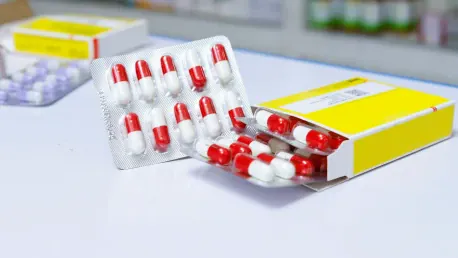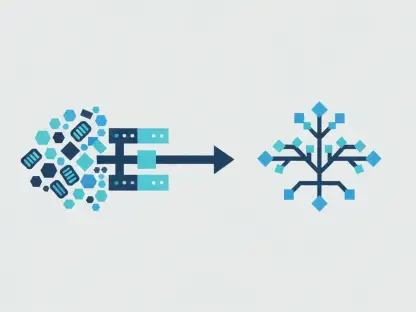The article delves into the intriguing potential of real-world evidence (RWE) to revolutionize the U.S. Food and Drug Administration’s (FDA) approval process for new drugs. By relying more on real-world data (RWD), regulatory decisions could become quicker, more economical, and maintain the current safety standards provided by traditional methods. Modern drug development has begun to see the positive impact of new technological advancements. Information technology provides vast amounts of health data for analysis, which opens the door to utilizing RWD and RWE in innovative ways.
Technological Advances and Opportunities
Big data from sources such as electronic health records, insurance claims, and patient registries are now at the industry’s fingertips. This data collection allows for a new dynamic in analyzing how drugs perform outside of traditional clinical trial settings. Aggregating and analyzing such large volumes of data efficiently have been made possible through developments in data science and machine learning, enabling a robust examination of RWE. Current advancements in technology facilitate faster data processing and offer insights into patient outcomes, safety, and drug efficacy in real-world settings.
Machine learning algorithms and other data analytics tools allow for the identification of patterns and trends within large datasets that might have gone unnoticed in traditional clinical trials. Additionally, the integration of wearable technology and mobile health apps provides real-time data, further enhancing the potential of RWE in drug evaluations. These technological strides make it increasingly feasible to assess the performance of pharmaceuticals and medical treatments in broader patient populations, ultimately speeding up the approval process and ensuring continual safety and efficacy monitoring.
Historical and Regulatory Context
Traditionally, the FDA has been conservative, relying heavily on randomized controlled trials (RCTs) to ensure drug safety and efficacy. This method has served well but is notably resource-intensive. The historical evolution of the FDA’s approach towards ensuring drug safety—especially before efficacy became a focal point in 1962—can offer insights. A shift back towards post-market evaluation utilizing RWE might bring about significant improvements in efficiency. The shift in regulatory focus from pre-market trials to post-market scrutiny underpinned by RWE can markedly reduce drug development costs and time.
Such a model would allow new treatments to enter the market more rapidly while still ensuring that they meet safety and efficacy standards through ongoing real-world monitoring. Post-market surveillance leveraging RWE would also facilitate earlier identification of adverse events and long-term effects, providing a more comprehensive understanding of a drug’s profile over its lifecycle. This paradigm shift could result in a more flexible and adaptive regulatory framework better suited to the realities of modern drug development and patient needs.
Challenges in Conventional Clinical Trials
RCTs are often criticized for their high costs and prolonged timelines. This barrier to entry not only stifles innovation but also delays patient access to vital therapies. Particularly for rare diseases, the conventional trial model presents unique challenges. Smaller patient populations and ethical dilemmas regarding placebo use complicate the process, raising costs and extending timelines even further. Additionally, RCTs’ stringent criteria often limit the diversity of trial participants, reducing the generalizability of the findings to broader patient populations.
The expense and scale of traditional clinical trials necessitate substantial financial investment from pharmaceutical companies, which can deter the development of treatments for less common conditions. These high costs and extended development periods can also result in higher drug prices for consumers upon market release. Harnessing RWE can alleviate some of these challenges by utilizing existing health data, which in turn can streamline the approval process, shorten the time to market, and potentially lower the financial burden on both developers and patients.
Legislative Support and Direction
Legislative advancements have aimed to propel the use of RWE in drug approval. The 21st Century Cures Act of 2016 directed the FDA to integrate RWD and RWE into its review processes. While progress has been slow since the act’s passage, recent measures such as the Prescription Drug User Fee Act (PDUFA) reauthorization in 2022 seek to push the envelope further. These measures emphasize robust RWE development programs. Moreover, continuous legislative support underscores a commitment to modernizing drug approval processes in alignment with technological advancements and public health needs.
As regulatory agencies are encouraged to adapt to innovative methodologies, there is a collaborative effort between policymakers, researchers, and industry stakeholders to refine the use of RWE. This collaboration aims to ensure that RWE methodologies are credible, transparent, and consistently applied. By setting clear guidelines and fostering an environment conducive to innovation, legislative initiatives pave the way for a more agile and responsive drug approval system that can more effectively meet patient needs without compromising safety and efficacy.
Case Studies and Practical Applications
Emphasizing successful case studies can showcase the transformative potential of RWE. The RECOVERY trial in the UK is a prime example—a pragmatic trial utilizing RWD for swift, cost-effective regulatory decisions. In contrast, the U.S. has been slower to embrace such large-scale pragmatic trials, clinging to traditional methods over innovative approaches like the UK’s. The RECOVERY trial’s success highlights the feasibility and benefits of integrating RWE into large-scale research efforts, demonstrating how effective treatments can be identified and approved rapidly.
By adopting similar pragmatic trials stateside, the U.S. could streamline its drug approval process, making it more responsive to urgent public health needs. Additionally, the practical application of RWE in drug development has already seen some success in the FDA’s approval of medications for rare diseases. These approvals, based on supplementary RWD, set a positive precedent and exemplify how RWE can complement traditional trials, particularly in areas where conventional methodologies are less practical. The continued exploration of RWE’s potential in diverse clinical scenarios could lead to more flexible and efficient regulatory strategies.
RWE in Rare Disease Treatments
RWE’s potential is magnified in the context of rare diseases where traditional RCTs often fall short. Increased funding and support for RWE may elevate the development of rare disease treatments, paving the way for faster approvals. Some FDA precedents show positive movement in this direction, with drugs for rare diseases approved partly on RWE. These cases could serve as templates for future scenarios. Given the challenges inherent in studying rare diseases, where patient populations are smaller and more genetically variable, RWE can provide invaluable insights that might not be feasible in conventional trials.
By leveraging data from real-world settings, researchers can gather more comprehensive information about a drug’s effects across a wider range of patients and conditions. This approach not only accelerates the approval process but also ensures that treatments reach patients in need more swiftly. Moreover, the flexibility afforded by RWE allows for ongoing adjustments and improvements in treatment protocols, which is particularly beneficial in the evolving landscape of rare disease therapies. As methodologies for collecting and analyzing RWE continue to advance, the potential for enhanced rare disease treatment development becomes increasingly promising.
Consensus and Advocacy
There is a growing consensus among experts and stakeholders about the benefits of RWE integration. The medical community and some policymakers recognize the need to make the drug approval process more efficient and cost-effective. Global examples, especially from places like the UK, serve as strong arguments for the U.S. to advance its RWE utilization. These models offer practical insights into the potential improvements. By drawing on the successes observed internationally, U.S. regulatory bodies can gain valuable perspectives on best practices and implementation strategies.
The advocacy for RWE is also bolstered by the increasing availability of high-quality data, which enhances the reliability and applicability of real-world insights. As more robust evidence endorsing RWE’s efficacy becomes available, its adoption in regulatory frameworks is likely to gain momentum. Additionally, alignment with global standards can also facilitate cross-border collaborations, benefiting the larger scientific and medical communities. Emphasizing the success and credibility of RWE-backed decisions can strengthen the case for its broader implementation, ultimately driving systemic improvements in drug approval processes.
Calls for Transparency and Methodological Rigor
Widespread acceptance of RWE requires clear methodologies and transparency. This means FDA must detail when and how RWE is employed in regulatory decisions to establish trust. Additionally, the establishment of standardized guidelines and publicly available reports documenting successes and failures will aid in the method’s credibility. Standardizing protocols for RWE utilization ensures consistency and reliability, thereby fostering greater confidence among stakeholders. It also lays the groundwork for reproducibility in research, which is a cornerstone of scientific integrity.
By implementing rigorous methodologies and transparent reporting practices, regulatory bodies can demonstrate the robustness of RWE. This transparency is crucial to ensuring that decisions made using RWE are scientifically sound and in the best interest of public health. Moreover, fostering an open dialogue about the challenges and limitations encountered in using RWE will help refine and enhance its application over time. Such an approach will encourage continuous improvement and innovation in the field, driving the development of increasingly sophisticated and effective regulatory strategies.
Context-Specific Applications
It’s important to recognize that RWE is not a one-size-fits-all solution. Integrating RWE must be done judiciously, understanding its suitability for different clinical contexts and limitations. Both traditional RCTs and innovative RWE approaches have their places in the approval ecosystem. Each method should be applied where it makes the most sense to ensure robust regulatory processes. The strategic use of RWE should be tailored to fit the specific demands of each drug development scenario, balancing innovation with methodological rigor.
Context-specific applications recognize that while RWE can provide valuable insights, there are situations where RCTs remain the gold standard for obtaining certain types of evidence. By applying a hybrid model that incorporates both approaches, regulatory bodies can optimize the strengths of each method to enhance drug evaluation processes. This balanced strategy ensures that new treatments undergo thorough scrutiny, maintaining high standards of safety and efficacy while leveraging real-world insights to expedite approvals and address patient needs more effectively.
Recommendations for Enhancing Regulatory Use
Enhanced reporting and transparency are pivotal. The FDA should commit to detailed reporting on RWE applications, sharing success stories, and identifying areas for improvement. Dedicated research initiatives are crucial. To validate RWE’s credibility, continued funding for studies comparing non-randomized data to RCT results is necessary. Setting ambitious yet achievable goals can guide progress. The FDA could aim for a clear target—like incorporating RWE in half of all supplemental applications by 2030, particularly for novel treatments for rare diseases.
Independent reviews, such as those by the National Academies of Sciences, Engineering, and Medicine, could help identify and dismantle remaining legal and regulatory barriers hindering pragmatic trials. Comprehensive audits and assessments will highlight areas of strength and aspects needing further development. Establishing external review mechanisms ensures objective evaluations and helps build public and professional trust in the system. By pursuing these recommendations, the FDA can significantly improve its drug development and approval process. This change will not only drive efficiency but also foster a robust and adaptable approach to modern drug regulation.
Future Outlook for Regulatory Evolution
The article explores the exciting potential of real-world evidence (RWE) to transform the U.S. Food and Drug Administration’s (FDA) approval process for new drugs. By relying more on real-world data (RWD), regulatory decisions could become faster, more cost-effective, and still uphold the safety standards of traditional methods. Modern drug development is increasingly benefiting from technological advancements. Information technology now provides substantial amounts of health data for analysis, which paves the way for innovative use of RWD and RWE.
Technological advancements have reshaped healthcare, offering new opportunities for collecting and evaluating health data. With the abundance of medical data available, the FDA can harness this information to streamline the drug approval process. This shift toward RWE not only speeds up approvals but also reduces costs significantly.
Furthermore, the traditional methods of drug approval are resource-intensive and time-consuming. By integrating RWD and RWE into the regulatory framework, the FDA can ensure that the safety and efficacy of new drugs are assessed more efficiently. This modern approach aims to maintain, if not enhance, the current safety standards while providing patients with quicker access to innovative treatments. As technology continues to evolve, the role of RWE in the drug approval process is expected to grow, making healthcare advancements more dynamic and responsive to patients’ needs.









